
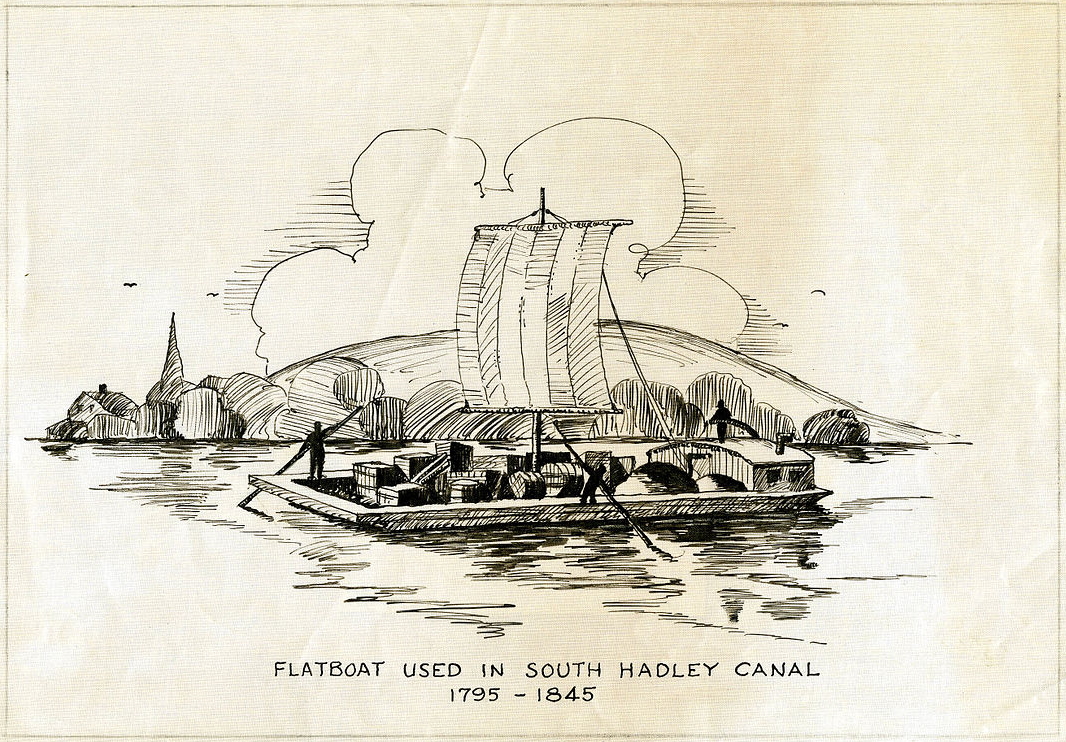
Two important ports were New Orleans, Louisiana and Natchez, Mississippi. Flatboat operators would float their boats to New Orleans or Natchez, sell their goods, take the flatboat apart and sell it for firewood, and then walk home. Keelboat operators would also float downstream but then push and pull their boats back home. To push and pull a keelboat back upriver was hard work and could take a long time. These trips might take nine months to make.
Because there were so many flatboat crews returning home on foot, a proven trail became known to many. The trail, which still exists today, is called the Natchez Trace or Trail. It is 444 miles long and goes from Natchez, Mississippi to Nashville, Tennessee.
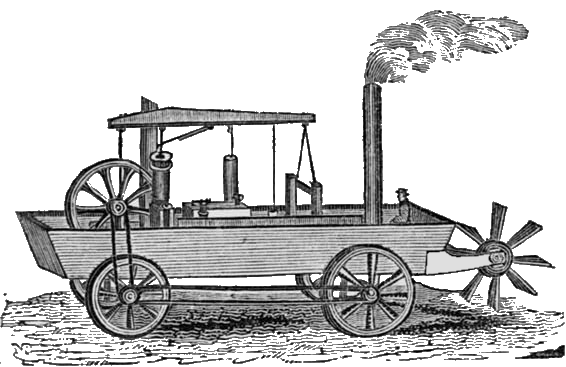
Inventions have made our world and our country a better place. The invention of steam machines has improved people's lives. Steam engines made work easier to do. A steamboat was a boat that used steam to power the boat. Steam-powered boats, or steamboats, made travel much easier and faster.
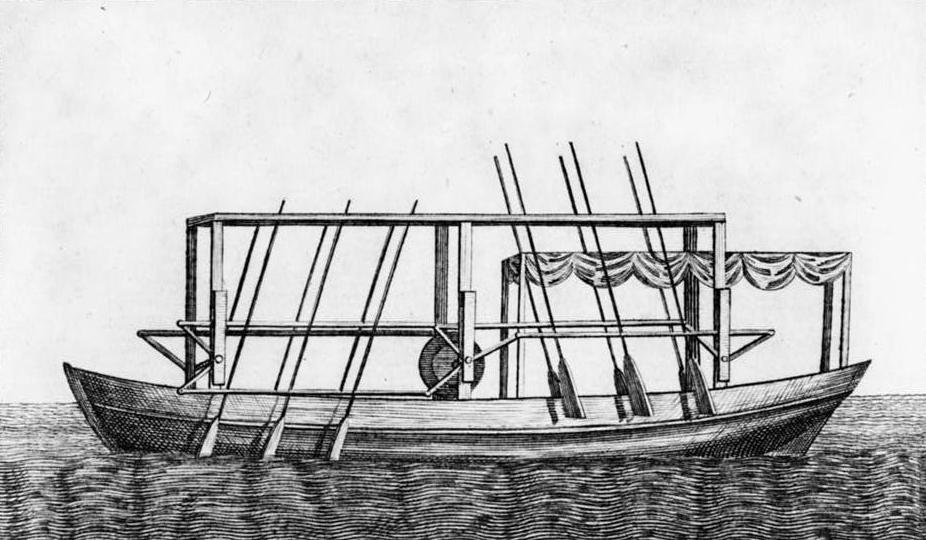
John Fitch made a steamboat in 1790. Fitch even showed his boat to members of the Constitutional Convention. His boat was a packet boat. It carried goods back and forth to different places.
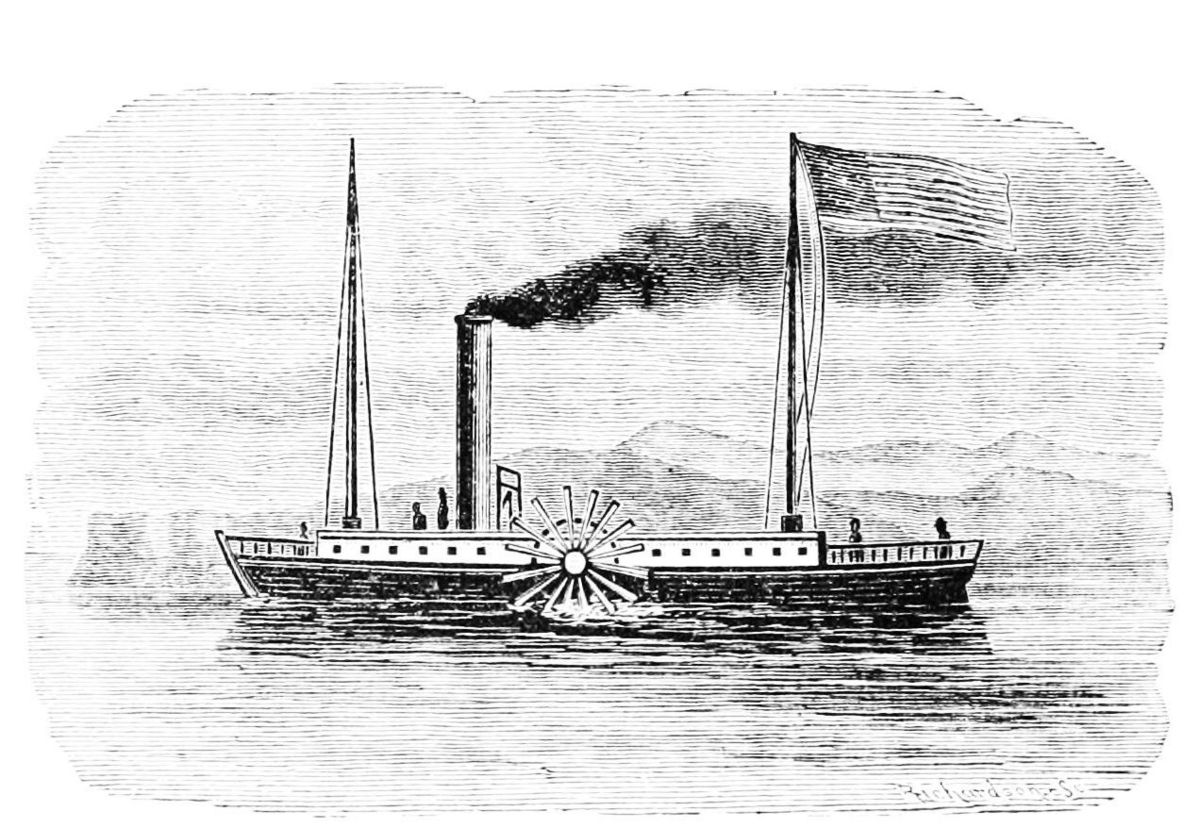
Robert Fulton made another steamboat. It was called the Clermont. It also could be used to ship things using steam power. Its first successful trip took place in 1807. It traveled from New York City to Albany.
Within a few years steamboats were traveling more and more often. There were only 17 steamboats in the west in 1817. By 1827 there were 200 hundred steamboats. And by 1855 there were 727 traveling up and down the country's rivers.
Steamboat travel made it easier and faster to make a trip. Use of a steamboat that could go back up river powered by a steam engine saved much time. For example, it took one keelboat crew 67 days to return home to Nashville after taking goods to New Orleans. It could also take the crews of flatboats months to make a trip (They walked home.). The first steamboats did not have the power to travel that far up rivers with strong currents. Before long however, steamboats could go from St. Louis to New Orleans in a few days and make the roundtrip (to go there and back) in less than a week.
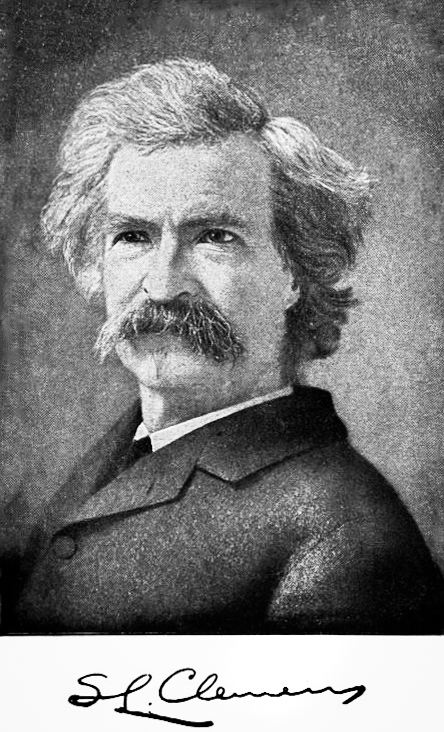
A famous person that was a steamboat pilot was Samuel Clemens. Clemens became a steamboat apprentice as a young man. After a few years he became a pilot. But, steamboat travel on the Mississippi pretty much stopped when the Civil War started. At that time, Samuel Clemens joined the Confederate army. He only stayed for several weeks and then quit. Then, Clemens moved to Nevada. His brother was the secretary of the Nevada Territory.
Samuel Clemens changed his name to Mark Twain. His new name comes from terms that are used on the river. Mark twain is a riverboat term. It means that the depth of the water is two fathoms deep. This is a distance of about twelve feet. Two fathoms was a safe depth for river boats to proceed. Mark Twain includes details about traveling on the Mississippi in his writing. He wrote Tom Sawyer and Huckleberry Fin.
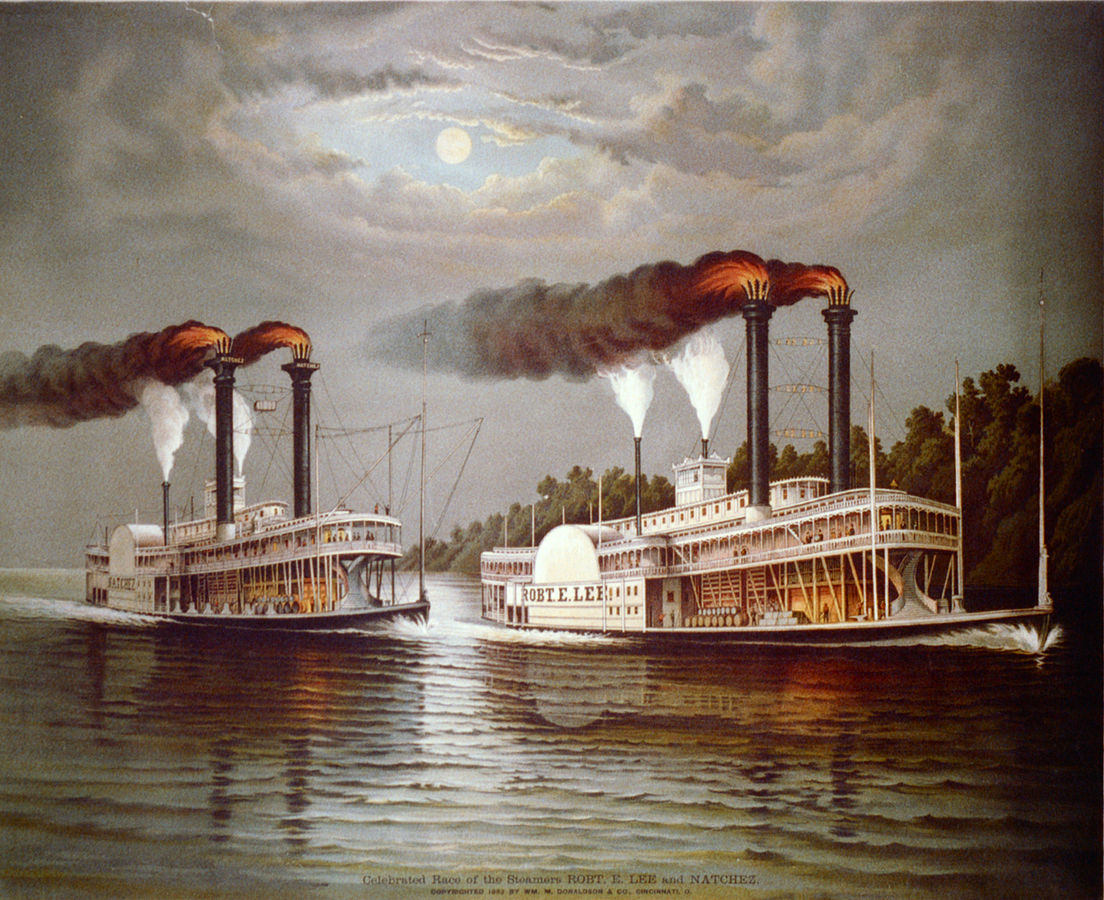
Steamboat races took place from time to time. One of those races was between the Robert E. Lee and the Natchez. The race started in New Orleans and went to Saint Louis. It took the Robert E. Lee three days to make the trip, and it won the race. The Natchez came in six hours later.
How did the Robert E. Lee crew win? They used a few tricks. First, they removed extra cargo. That lightened their boat. They also kept going when they had foggy weather. The Natchez kept its regular load of cargo and stopped one morning when it was foggy.
Steamboat races were popular, but they were dangerous. One of the biggest dangers was engine explosions (to blow up). Most steamboats would not last more than five years.
As more steamboats were used more transportation took place. Westward expansion also increased with the use of more steamboats. The country grew and expanded west.

Text Credits:
http://www.encyclopedia.com/topic/Steamboats.aspx;
https://tennesseeencyclopedia.net/entry.php?rec=1397;
https://www.marktwainhouse.org/man/biography_main.php;
http://bancroft.berkeley.edu/Exhibits/MTP/mississippi.html http://mjcpl.org/rivertorail/steamboatdevelopment/john-fitch-robert-fulton-and-the-voyage-of-1811;
A History of Steamboats;
http://www.sam.usace.army.mil/Portals/46/docs/recreation/OP-CO/montgomery/pdfs/10thand11th/ahistoryofsteamboats.pdf;
Natchez Trace- https://www.nps.gov/nr/travel/lewisandclark/nat.htm